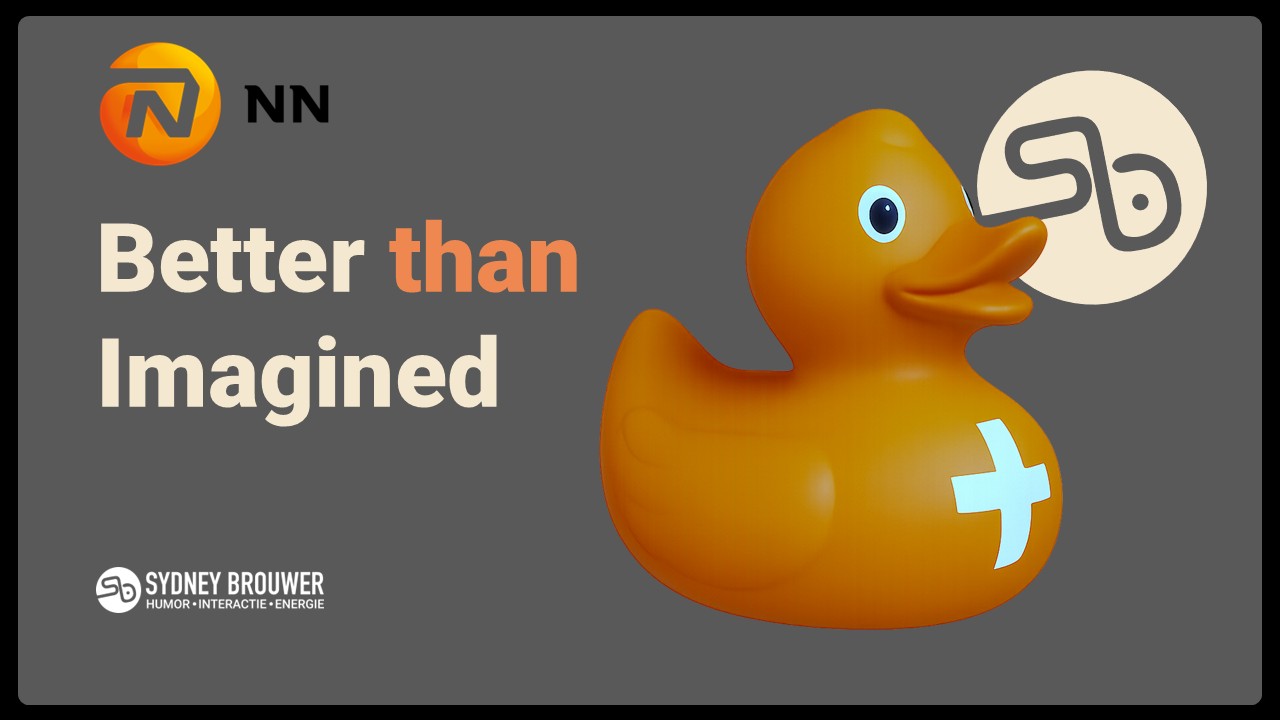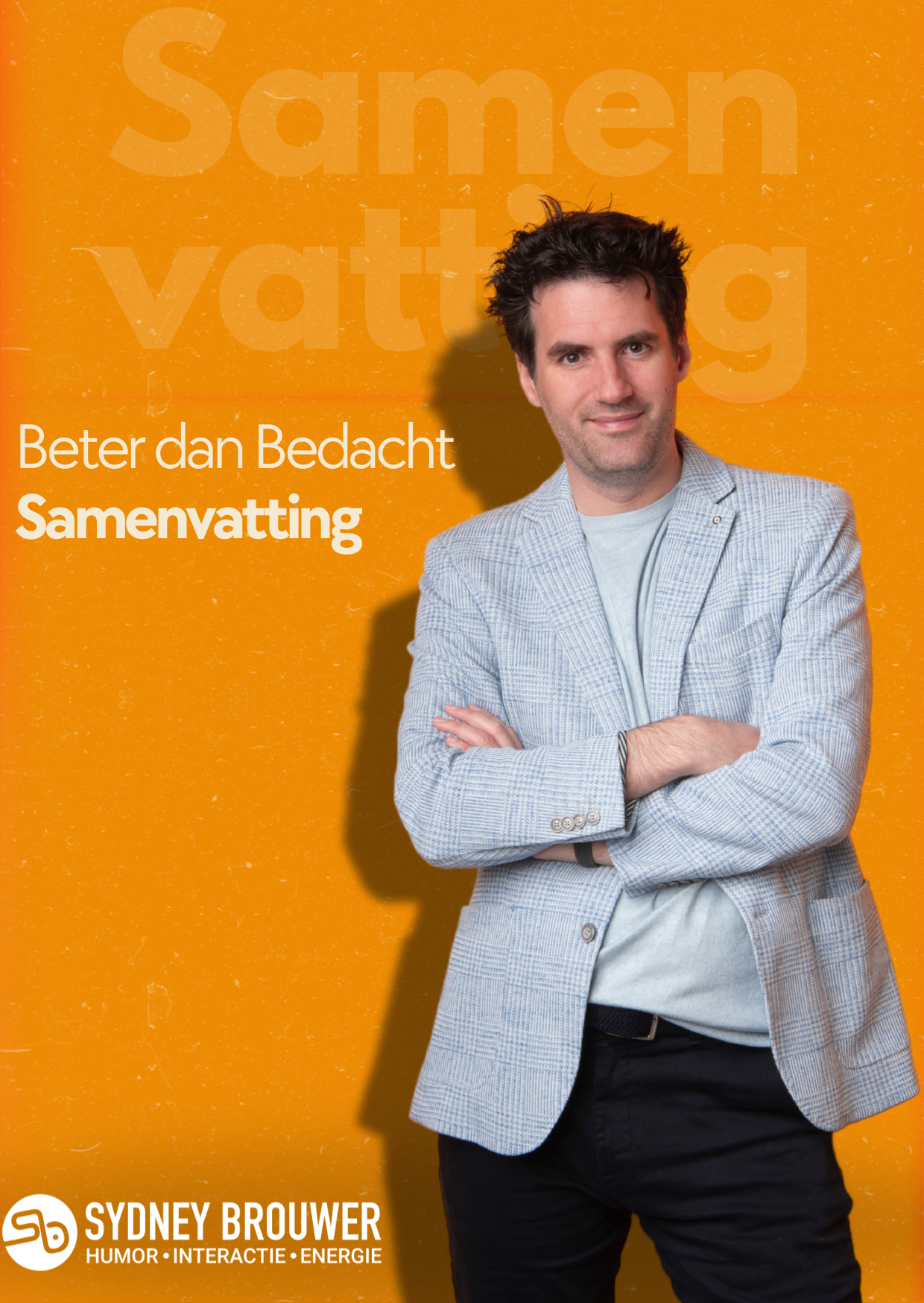- Home
- Podcast
- Keynote samenvatting
- Summary NN: Better than Imagined
 Thank you for your interest in the Better than Imagined keynote!
Thank you for your interest in the Better than Imagined keynote!
Below you’ll find the summary of my keynote, made with Plaude.ai
You will also find the Better than Imagined cards with a visual summary and challenges. The cards are only available in Dutch unfortunately.
Better than Imagined cards
Click here to download the cards

1. General Message of the Keynote
The keynote emphasizes that in today’s increasingly unplannable world, traditional reliance on rigid plans is insufficient. Instead, organizations and professionals must cultivate the ability to experiment, improvise, and adapt. By taking small “Plus One” steps—incremental experiments or improvisations—unexpected and surprisingly better results can be achieved, results that are truly better than imagined.
2. Chapters of the Keynote
a. Opening – Movie Inspiration
Sydney introduces the theme with a famous unscripted scene from Indiana Jones. Improvisation turned a challenge into one of the most memorable film moments. This sets the stage for the idea that outcomes can be better than what was originally planned.
b. The IKEA Example
The crisis improvisation during IKEA’s first store opening (customers picking items themselves) became the foundation of their business model. Proof that accidents and improvisation can lead to lasting value.
c. Complicated vs. Complex (Cynefin lens)
-
Complicated problems: solvable with expertise and clear steps (like a Rubik’s Cube, building bridges, flying planes).
-
Complex problems: unpredictable, like raising children. Cause and effect can only be seen in hindsight. These require learning-by-doing, experimenting, and improvisation.
d. AI, Complexity, and Work of the Future
AI is excellent at solving complicated tasks, but this leaves humans with increasingly complex work. Organizations must therefore embrace improvisation and experimentation to thrive.
e. The Plus One Approach
Using the “Plus One” concept: small steps, small experiments, or improvisations that test and reveal opportunities. Illustrated with:
-
The Italian newspaper Il Foglio, which ran playful AI experiments that unexpectedly boosted sales and led to a new AI consultancy.
-
MIT research showing 95% of AI initiatives fail, but successful ones typically start bottom-up from “prosumers” experimenting on the frontline.
f. Risk Metaphor – Sunglasses, Haircuts, Tattoos
Different risks demand different approaches:
-
Sunglasses risks: low-risk experiments anyone should try.
-
Haircut risks: medium-risk, reversible changes that may pay off.
-
Tattoo risks: big, irreversible bets that should be taken carefully and at the right level.
g. Mindset Exercise
Through an improvisation game, Sydney shows the difference between the “Minus One mindset” (blocking ideas) and the “Plus One mindset” (adding to ideas). In organizations, nurturing the Plus One mindset leads to collaborative outcomes that are better than anyone initially expected.
h. Closing – Rebellious Bees
In bee colonies, 10% are “rebels” who explore new fields. This ensures survival when old resources disappear. Similarly, professionals should spend about 10% of their time doing something different, breaking patterns, and exploring new opportunities.
3. Inspiring Quotes
-
“We live in an increasingly unplannable world.”
-
“Better than imagined is an outcome different from the plan, but better because we dared to improvise and experiment.”
-
“In complex situations, we learn more from doing than from thinking.”
-
“A Plus One is a small step forward—not because you know it will work, but because you’re curious what it will bring.”
-
“Everyone should be at least 10% rebellious to discover new flower fields of opportunity.”
4. Key Action Points
-
Differentiate between complicated and complex challenges – Use expertise and plans for the first, but experiment and improvise for the latter.
-
Start with small “Plus One” experiments – Encourage bottom-up initiatives, as they are the source of most successful innovations.
-
Adopt the Plus One mindset – Always look for ways to build on others’ ideas instead of shutting them down, and treat risks as sunglasses, haircuts, or tattoos.
